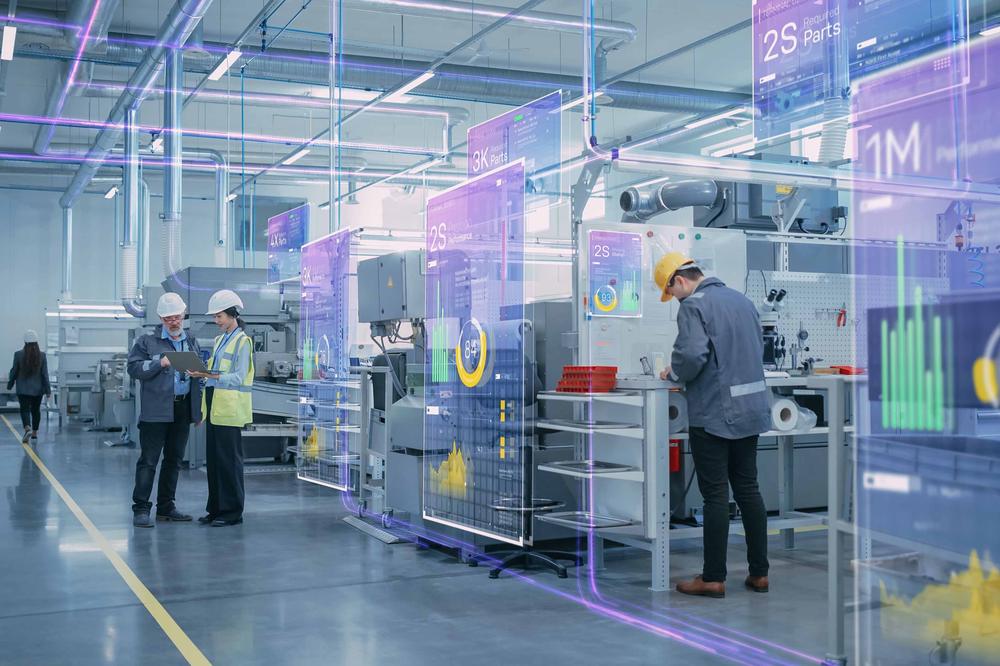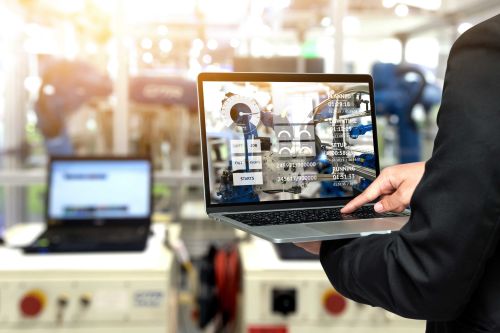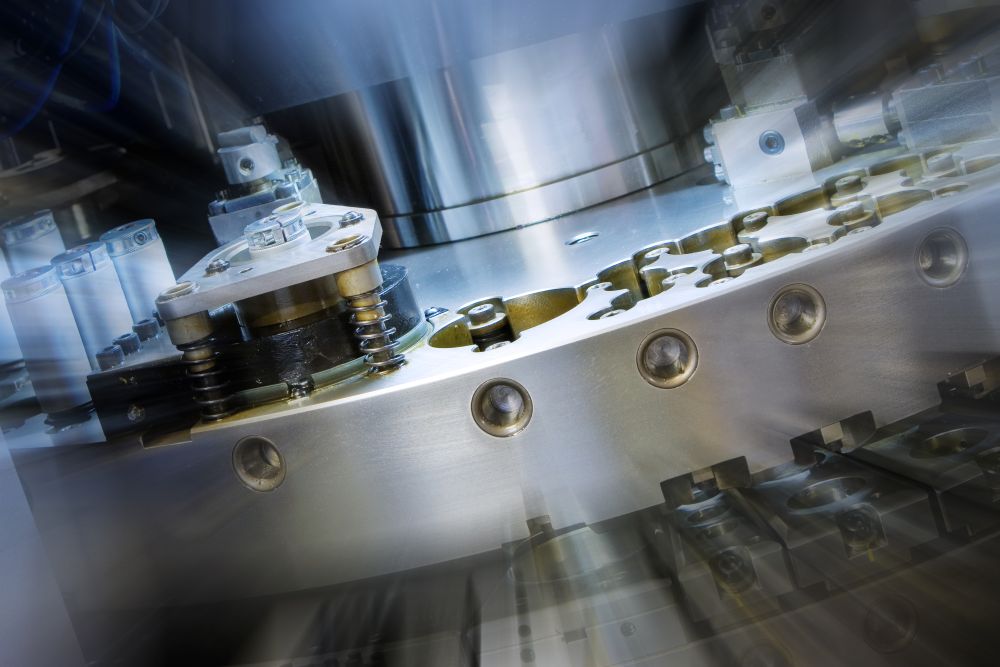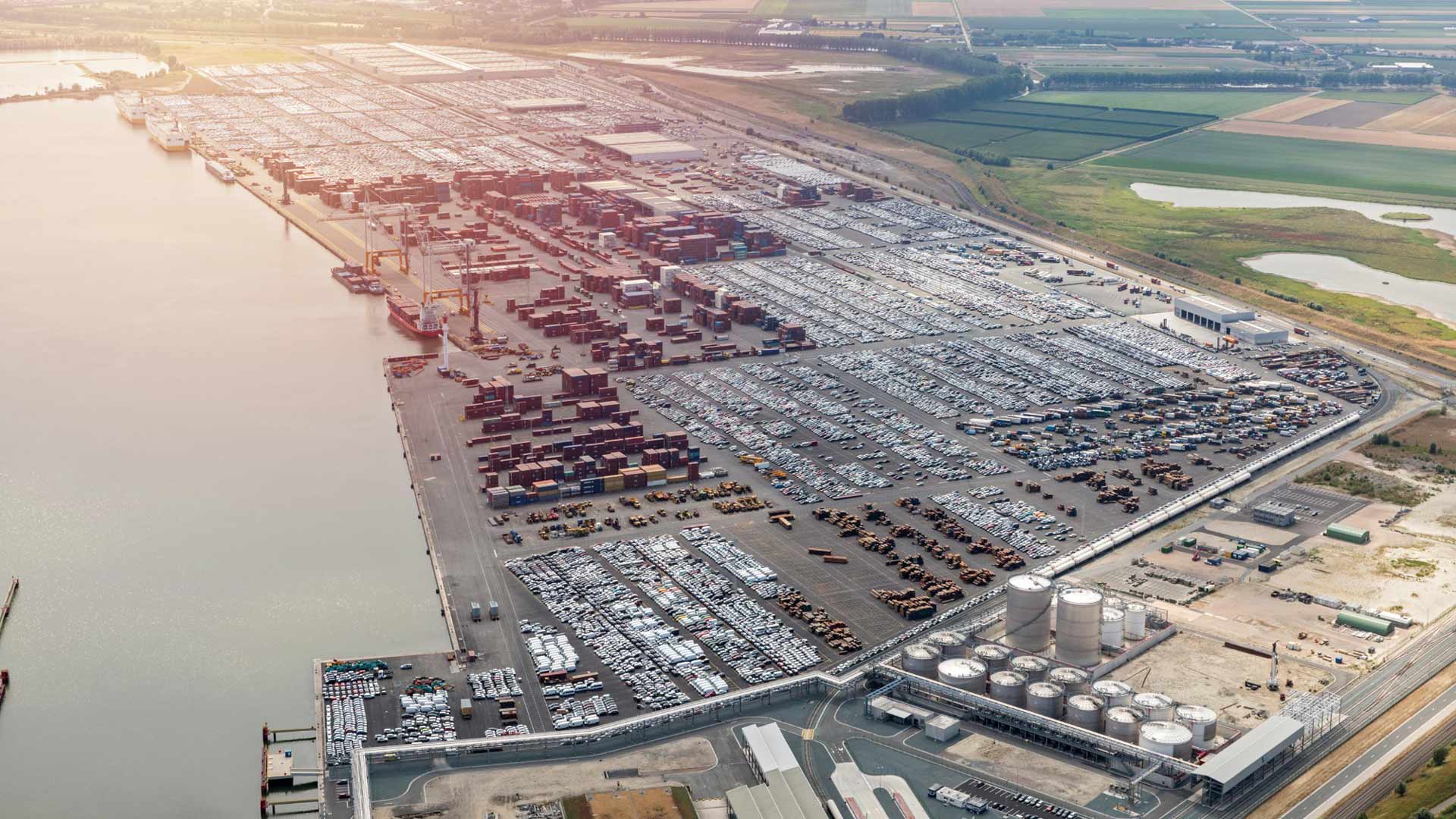
The B2B platform for the best purchasing descision. Identify and compare relevant B2B manufacturers, suppliers and retailers
Close
Filter
Result configuration
Continents
Select continent
Locations
Result types
Company type
Select company type
Industries
Select industry
Company status
Select company status preset
Number of employees
Min.
Max.
Founding year
Kipcast
Sant'Ambrogio di Valpolicella, Italy
B
11-50 Employees
2006
Key takeaway
Kipcast emphasizes its expertise in data integration through its Highstreet.io platform, which streamlines data feed management and integrates e-commerce marketing strategies for luxury brands. Their commitment to innovation and data intelligence positions them as a key player in enhancing online retail operations.
Reference
Service
Data Integration - Kipcast
Mind-Mercatis
Milan, Italy
B
11-50 Employees
2007
Key takeaway
The company, Mind-Mercatis, focuses on creating new models to enhance integration between applications, technologies, and organizations, supporting digital transformation. They design technological and business processes that integrate systems using iPaaS, which reduces complexity and development costs, ultimately accelerating business growth.
Reference
Core business
Consulenza e Integrazione Software | Mind-Mercatis | System Integration
Cerchi un partner per la tua trasformazione digitale? Rivolgiti a Mind-Mercatis: crea valore per la tua azienda
Irion
Turin, Italy
B
51-100 Employees
2004
Key takeaway
The company, Irion, focuses on transforming traditional data approaches through its all-in-one platform, Irion EDM, which enhances data accessibility and unlocks business potential. Their integrated solutions for modern data management aim to accelerate digital transformation and create a competitive advantage for businesses.
Reference
Core business
Enterprise Data Management - Irion
Integrated, agile, accountable, Data Fabric ready. Reduce costs and exploit SQL skills. No more back and forth between software!
Looking for more accurate results?
Find the right companies for free by entering your custom query!
25M+ companies
250M+ products
Free to use
beanTech
Udine, Italy
B
51-100 Employees
2001
Key takeaway
The company offers advanced data integration solutions through Boomi, an iPaaS platform that simplifies the connection and transformation of data from various applications and devices. This capability enhances operational processes and supports digital transformation efforts, ultimately increasing reliability and reducing costs for businesses.
Reference
Product
Boomi iPasS per la Data Integration | beanTech
Boomi, la soluzione iPaaS adottata da più di 18.000 clienti nel mondo, è ideale per dare valore ai dati provenienti da applicazioni e device diversi.
Sodabiz - Data solutions & Business Intelligence
Cologno Monzese, Italy
B
1-10 Employees
2018
Key takeaway
The company specializes in data integration and transformation, providing end-to-end solutions that enable users to independently explore and utilize business data. Their focus on data integration processes and implementations of data solutions helps reduce ICT costs and enhance user satisfaction.
Reference
Core business
Sodabiz – Soluzioni Dati E Business Intelligence
BI Network
Cernusco sul Naviglio, Italy
B
11-50 Employees
2012
Key takeaway
The company emphasizes its expertise in data management, covering the entire process from source integration to final visualization through KPIs, dashboards, and reporting. Their focus on optimizing and analyzing data positions them as a valuable partner for businesses seeking smarter data-driven insights.
Reference
Service
Archivi Services | BI Network
Interdata
Naples, Italy
B
11-50 Employees
1977
Key takeaway
Interdata focuses on developing unique solutions that facilitate digital transformation and growth opportunities for its clients. Their implementation services emphasize a structured methodology that analyzes needs and designs interoperable applications, making it highly relevant for data integration efforts.
Reference
Service
Implementation Services – Interdata
Netstorming
Venice, Italy
B
11-50 Employees
2004
Key takeaway
NetStorming specializes in network design and implementation, offering XML integrations that enhance travel companies' ability to sell products from third-party suppliers and distribute their own inventory. With around 150 integrations already in place, they provide robust tools and support to maximize productivity in the tourism sector.
Reference
Product
XML Integrations for Tour Operators and Travel Agencies | Netstorming
We've implemented around 150 integrations with leading suppliers in the travel industry and we keep on developing new integrations with new suppliers.
Mia-Platform
Milan, Italy
B
101-250 Employees
2016
Key takeaway
Mia-Platform offers a robust Digital Integration Hub (DIH) that streamlines data integration through event-based communications and data management, addressing the complexities of digital transformation. Their solutions enhance API platforms and facilitate the decoupling of legacy systems, making it easier for companies to achieve omnichannel capabilities.
Reference
Product
Digital Integration Hub (DIH) | Mia-Platform
Built on event-based communications and data management components, the Digital Integration Hub (DIH) solves the challenge of omnicanality.
PHARMA INTEGRATION SRL
Italy
B
11-50 Employees
2016
Key takeaway
Pharma Integration focuses on delivering advanced systems for aseptic fill-finishing in the pharmaceutical industry, highlighting their commitment to innovative solutions that enhance the production and distribution of biotechnological injectable products. Their Azzurra robotic systems are specifically designed to meet diverse production requirements, showcasing the company's dedication to integrating cutting-edge technology in pharmaceutical processes.
Reference
Core business
Overview - Pharma Integration
Innovative drugs require innovative systems – Pharma Integration is constantly striving to provide Pharmaceutical Companies with fill-finishing systems as
Technologies which have been searched by others and may be interesting for you:
A selection of suitable products and services provided by verified companies according to your search.

Product
edbic
Go to product

Service
Data Engineering Services
Go to product

Service
Graphic Design Services
Go to product
A selection of suitable use cases for products or services provided by verified companies according to your search.

Use case
Continuous monitoring
Manufacturing
The challenge Blickle has always prided itself on the superior quality of its wheels and castors. To further enhance this quality with modern technology, the company decided to migrate its production processes to Industry 4.0 standards. This planned transition should have minimal impact on the three-shift production operation, while maintaining flexibility and openness for future digitalization initiatives. The solution Blickle IT developed a concept to enable a sustainable and gradual transformation. At the heart of the strategy is edbic, which enables condition monitoring. Acting as a central data hub, edbic seamlessly extracts data from the machines, transfers it to the ERP system and provides full production transparency. The result With the implementation of edbic, machine data no longer reaches IT incomplete or delayed. Immediate data analysis enables rapid problem resolution. Automatic punching presses are monitored to determine output results, missing parts, quantities and more. By eliminating most of the Excel lists previously used, edbic has significantly streamlined operations. In polyurethane production, edbic identifies and corrects problems, contributing to Blickle's high quality castors and wheels. In addition, edbic is now being used beyond production, facilitating connections to payment providers in the web shop and establishing a communication link with SAP. Outlook for the future Blickle plans to further refine the system by using machine data comparison for predictive maintenance. In addition, the company is considering implementing the compacer IoT gateway to take communication between machines and the ERP system to a new level of automation.

Use case
IoT gateway and Industry 4.0 application
Industry 4.0, Manufacturing
The challenge: BURKHARDT+WEBER is renowned for its expertise in large machining centres. Headquartered in Reutlingen, Germany, the company has a global presence and supplies its products to customers around the world who place a premium on quality. For 130 years, BURKHARDT+WEBER has focused on developing state-of-the-art production solutions for the demanding machining of steel, cast iron and titanium components. The development of these machining centres is the collaborative work of interdisciplinary teams, and all essential components, as well as in-house developments, are manufactured within the company. The compacer IoT solution, built on the edbic platform, is planned for future integration into BURKHARDT+WEBER machining centres. The installation of the compacer IoT gateway enables data collection from the machine's control system. In the long term, BURKHARDT+WEBER machines will offer a wide range of data that can be examined in real time to provide a detailed overview of the machine's condition and efficiency on a dashboard. The solution: An IoT hub will process the collected data, enabling a variety of assessments and ensuring that the operator is kept informed at all times. With machines connected to the compactor solution, condition monitoring is possible, paving the way for the implementation of predictive maintenance. With this approach, BURKHARDT+WEBER enables its customers to successfully implement upcoming digital transformation projects within their production processes.

Use case
Digital retrofit at a manufacturer
Electrical installation technology
The challenge: Our customer has an individually analog 30t punching and bending machine in use, which must not be interfered with in the control process. Small hairline cracks in the large drive wheel can lead to a machine failure, resulting in a production stop. Due to the high storage costs, the spare part is not kept in stock. It can take up to three weeks to order and deliver the new part. In order to avoid a machine breakdown, it should be digitally connected to the current production environment and in future the condition of the gearwheel should be analyzed by means of condition monitoring and a breakage better predicted. Our customer's goal was therefore to make the machine IoT-ready with a digital retrofit in order to reduce machine downtimes and increase machine utilization times. The solution: Digital activation of the existing system was unavoidable, which is why sensors were initially installed by the customer to detect the gear breakage. The vBox from Fraunhofer IPT processes the sensor signals and sends the data to the compacer data platform edbic. Among other things, structure-borne noise, vibration, temperature, torque and current are measured. Increased current consumption, which can be a sign of excessive load due to friction and a lack of lubricant, is detected. However, the collected and evaluated data also reveals smaller cracks. The frequency spectrum and other values are recorded, compared and examined for outliers in real time. If an outlier, such as a crack, is detected, an alarm is generated and employees are informed. They can take action if necessary and production downtime can be avoided. Our customer: a German market leader in the field of electrical installation technology and global market leader in SCHUKO® sockets, produces at two locations in Germany and exports to more than 60 countries. In order to further expand its brand leadership and establish innovations in the smart home sector, the company is taking on new digital challenges.

Use case
Business and IoT integration in Antwerp Euroterminal
Ports
The challenge: The implementation of a new Terminal Operating System (TOS) offered our customer the unique opportunity to rethink the entire IT landscape. Accelerating the digital transformation and reducing the workload became key target definitions. The aim was to meet the ever-changing internal and customer requirements, while offering high-quality services to end customers. The most important factors were maintaining a high level of customer satisfaction and a clear commitment to maximum security. The existing system landscape had grown with the company and was therefore very heterogeneous and poorly integrated. This had led to high maintenance and administration costs. Integration projects were only implemented when necessary and integration problems were solved by in-house developments. This led to silo thinking and resulted in increasingly fragmented and isolated knowledge. It became clear that networking the respective systems with suitable tools would create immediate added value and greater transparency. In addition to the "classic" challenges of integration projects, our customer emphasized that the topic of IoT integration was very important to them. Particular attention should be paid to finding the right speed and the right tools for the changeover. A software platform that would enable them to connect their B2B partners and their applications electronically and provide a solid basis for the planned IoT integration would therefore be far ahead of all competing offerings. The solution: The customer decided to use the compacer edbic platform as a B2B/IoT gateway. The integration platform acts as a central "data hub" for our customer and the applications of its trading partners. It has since become the core of all operational and logistical flows. edbic was supplemented in a second step by edpem to introduce business process monitoring (BPM). A whole series of integration projects were implemented in a very short space of time. Some of these were "traditional" B2B projects designed to enable the exchange of EDI, XML and proprietary data with the applications of trading partners and third parties by converting and transmitting the data transparently. In addition, a large number of applications were connected via edbic. The system for shift planning and management of terminal workers was linked to the access control system for the port, enabling automated payroll and significantly relieving the HR department of day-to-day tasks. Integration with the customer's ERP environment, on the other hand, partially automated order acceptance, fulfillment and billing. New capabilities were also added, such as the generation of data records for structured test scenarios, automated access control based on shift planning and visitor appointments, and much more. However, the port operator wanted to go one step further and tackle its first IoT project. For the pilot project, sensor data from the terminal's various weighing and measuring systems was published via edbic. A typical use case is measuring the verified gross mass (VGM) to comply with SOLAS requirements. The data obtained is now automatically fed into higher-level systems such as the TOS or stowage planning for loading ships, where it is available for further processing, analysis and visualization. The network of surveillance cameras has been connected to a perimeter security system, which enables the early detection of intruders. The comparison of number recognition events (ANPR) with access control information and TOS transactions makes anomalies visible, improves traffic management and increases security - a key concern in port terminals. All of this is controlled by edbic. This new level of digitalization makes everyday terminal logistics easier and significantly increases the efficiency of the port.

Use case
EDI in electronics wholesale
Wholesale
The challenge: Due to a lack of transparency in communication, there are always gaps in the transfer of know-how between the active shareholders. A standardized communication structure between customers and business partners must therefore be established. Among other things, this should also contain information on delivery information and ensure greater transparency within the business processes. One challenge, for example, was the lack of visibility of goods availability, which needed to be resolved. The solution: In addition to establishing central IT services, the aim was to create a modern communication concept for Europe-wide business processes using EDI so that all shareholders in Europe can access all data in a shared database. compacer was commissioned to develop, set up and operate a fully integrated B2B industry platform for the group of companies. In addition to the EDI component with integrated supplier onboarding portal, this was also to cover the topic of e-invoicing. An e-invoicing platform was to be established that implements e-billing, signed PDF, e-mail distribution and ZUGFeRD in practice. Our customer: is a market community in electrical wholesale and a group of companies that operates internationally in 26 countries. More than 230 independently cooperating electrical wholesalers now belong to the association. Almost every shareholder is an independent family business. The aim is to strengthen the future of wholesalers. That is why the company's focus is also on cooperation with the individual manufacturers. This is also the reason why a central e-commerce platform had to be set up and expanded.

Use case
Replacement of Legacy Systems
Logistics
The challenge: Our customer was in a very difficult situation: the existing data integration software was outdated, extensions from the provider were no longer possible and support for the software had also been discontinued. As a result, they were looking for a successor that would meet the criteria for a modern data and integration platform, e.g. through web services, and enable a high data throughput. The decisive factor for the customer was full integration into the IBM/AS400/DB2/MQ system environment while adhering to the specified budget and schedule and the modernization and development of a data integration platform for EDI services as a group application with separate systems for development and testing. The solution: The decisive arguments for choosing compacer were, on the one hand, the price and also the time savings that compacer had estimated for the migration project with its model-based and automated project approach. Even the customer's internal service provider would not have been able to implement this in this time frame or with the budget that had been included. On the other hand, the customer was also impressed by the diverse possibilities and flexibility of the compacer data and integration platform edbic during an on-site reference appointment. The migration not only involved the automated porting of around 1,500 mappings and the associated EDI message connections, but also 2,400 partner connections, with the premise that this should have no impact on the connected business partners. Result: Thanks to our model-based project method and close-meshed project controlling, we were easily able to keep to the project timeframe and the specified budget in this migration project. This also made it possible for us to provide the customer with flexible support wherever possible, absorb work peaks on the customer side and gradually take on additional tasks for the customer. We saw this as a great vote of confidence. But it was not only the compacer project method and the successful cooperation that had a positive influence on the speed of the project. Thanks to our established, model-based approach and the automation by means of tool-supported porting of message structures and processes, conversion times and manual sources of error were drastically reduced. This has reduced the migration and testing effort by 80% to 90% compared to the usual manual approach. By using the compacer data integration platform edbic, our customer can now set up processes more easily in day-to-day operations, reuse modules and monitor processes and their interaction more effectively. This significantly increases IT efficiency. The system load is currently 2 million data records per working day (8 hours) and a peak load of 1 million/hour, whereby the system is designed for up to 7 million data records per day. The customer was impressed not only by the flexibility and adaptability of the platform, but above all by its speed. The next step is to implement the diverse possibilities of web services with edbic.

Use case
Business Design & Prints
Business Industry, Printing industry
A Great First Impression! In a world where people have many options, you make your business distinctive with business cards. Creative Ink is based in Dubai and aims to introduce you better in the first go without even exchanging words. Simply customized business cards and win your customer instantly.

Use case
Continuous monitoring
Manufacturing
The challenge Blickle has always prided itself on the superior quality of its wheels and castors. To further enhance this quality with modern technology, the company decided to migrate its production processes to Industry 4.0 standards. This planned transition should have minimal impact on the three-shift production operation, while maintaining flexibility and openness for future digitalization initiatives. The solution Blickle IT developed a concept to enable a sustainable and gradual transformation. At the heart of the strategy is edbic, which enables condition monitoring. Acting as a central data hub, edbic seamlessly extracts data from the machines, transfers it to the ERP system and provides full production transparency. The result With the implementation of edbic, machine data no longer reaches IT incomplete or delayed. Immediate data analysis enables rapid problem resolution. Automatic punching presses are monitored to determine output results, missing parts, quantities and more. By eliminating most of the Excel lists previously used, edbic has significantly streamlined operations. In polyurethane production, edbic identifies and corrects problems, contributing to Blickle's high quality castors and wheels. In addition, edbic is now being used beyond production, facilitating connections to payment providers in the web shop and establishing a communication link with SAP. Outlook for the future Blickle plans to further refine the system by using machine data comparison for predictive maintenance. In addition, the company is considering implementing the compacer IoT gateway to take communication between machines and the ERP system to a new level of automation.
When exploring the Data Integration industry in Italy, several key considerations come into play. Understanding the regulatory framework is essential, as compliance with the General Data Protection Regulation (GDPR) is crucial for any data handling operations. Italy's data protection authorities are known for their stringent enforcement, and businesses must prioritize data privacy and security in their integration strategies. The competitive landscape is evolving rapidly, with both established companies and innovative startups vying for market share. It’s important to assess the technological capabilities and service offerings of potential partners or suppliers. Additionally, the growing demand for cloud-based solutions presents significant opportunities for companies focusing on modernizing data integration processes. Challenges include navigating the complexities of integrating diverse data sources and systems, particularly in industries such as finance and healthcare, which have specific compliance needs. Furthermore, the impact of environmental concerns and sustainability is increasingly becoming a priority, influencing how companies approach data management and integration. Global market relevance is another factor, as Italy is part of the broader European market, making it imperative for businesses to stay competitive on an international scale. By considering these aspects, one can gain valuable insights into the Data Integration industry within Italy, allowing for informed decision-making when researching companies in this field.
Some interesting numbers and facts about your company results for Data Integration
| Country with most fitting companies | Italy |
| Amount of fitting manufacturers | 164 |
| Amount of suitable service providers | 114 |
| Average amount of employees | 11-50 |
| Oldest suiting company | 1977 |
| Youngest suiting company | 2018 |
Some interesting questions that has been asked about the results you have just received for Data Integration
What are related technologies to Data Integration?
Based on our calculations related technologies to Data Integration are Big Data, E-Health, Retail Tech, Artificial Intelligence & Machine Learning, E-Commerce
Which industries are mostly working on Data Integration?
The most represented industries which are working in Data Integration are IT, Software and Services, Other, Consulting, Automation, Media and Entertainment
How does ensun find these Data Integration Companies?
ensun uses an advanced search and ranking system capable of sifting through millions of companies and hundreds of millions of products and services to identify suitable matches. This is achieved by leveraging cutting-edge technologies, including Artificial Intelligence.